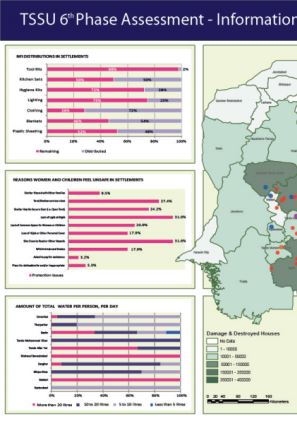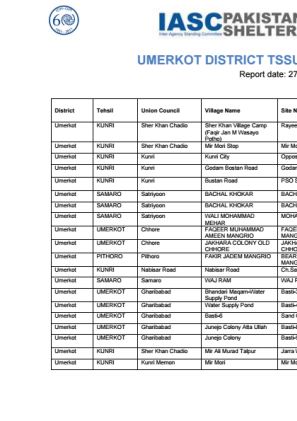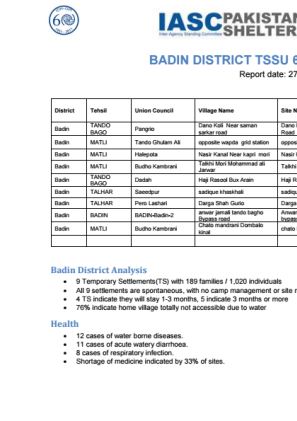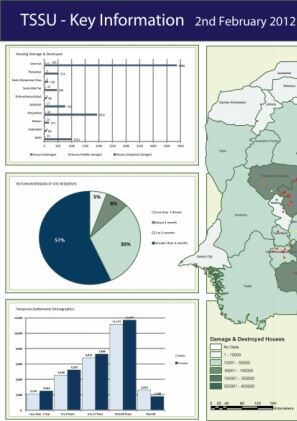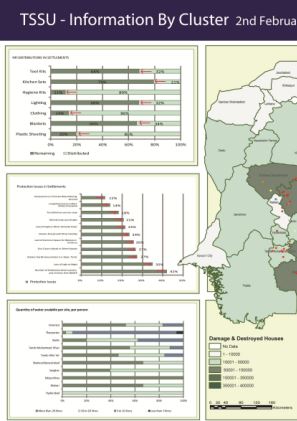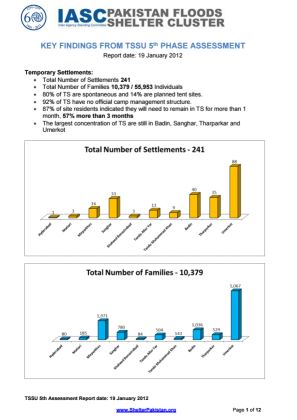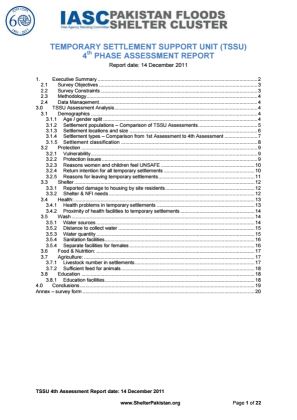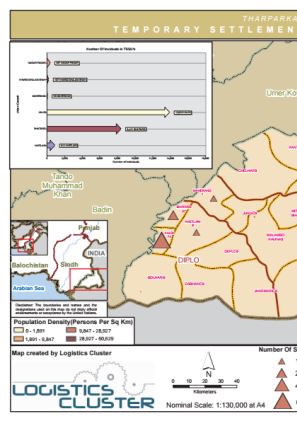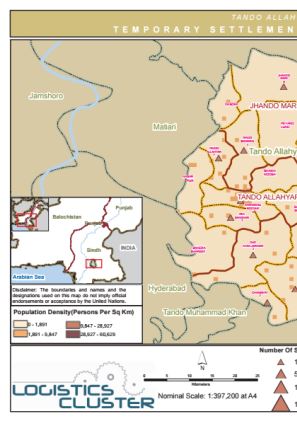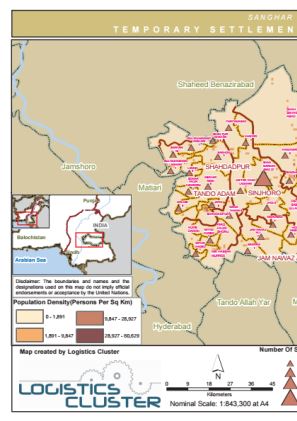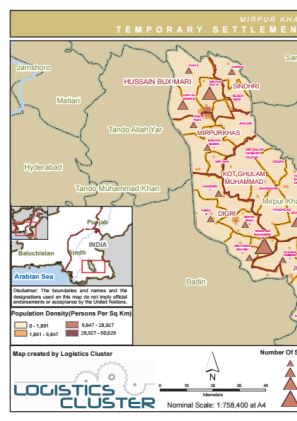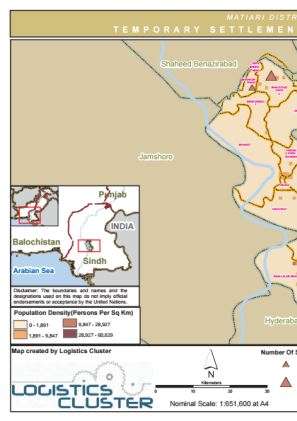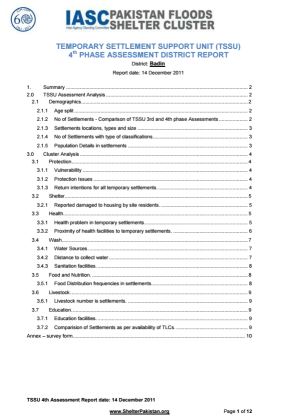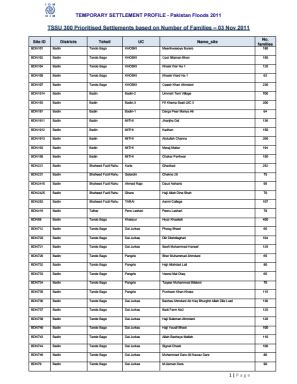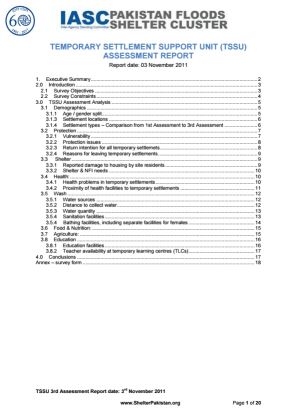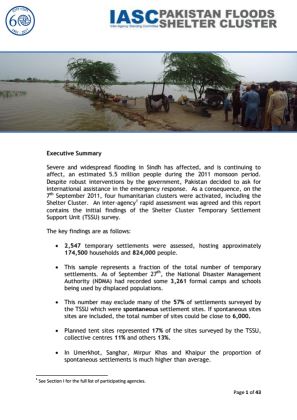-
Countries
-
Data and Analysis
-
Special Focus
-
Crisis Responses
Pakistan
Pakistan
TDPs tracked
Displacement Movements
23,000
IDMC 2023
Data collection round
About Pakistan
In 2010, IOM’s Displacement Tracking Matrix (DTM) programme started its activities in Pakistan as part of IOM’s emergency flood response programme. Over the years, DTM has evolved into a comprehensive programme covering a wide range of activities. The DTM programme works closely together with a wide array of stakeholders, including government ministries and national and sub-national statistical organizations, UN agencies, and specialized research institutes. Its activities are instrumental in providing stakeholders with an evidence-base to effectively address humanitarian, transition, and development needs within the country.
In 2017, DTM started the implementation of its Flow Monitoring (FM) activities. DTM collects FM data at the Torkham (Khyber Pakthunkhwa), Chaman, Badini and Bahramcha (Balochistan) border crossing points (BCPs) to identify cross-mobility patterns and profiles of Afghans who are returning from Pakistan to Afghanistan. The data presented in FM information products is harmonized with those from the United Nations High Commissioner for Refugees (UNHCR), who also cover Ghulam Khan (Khyber Pakhtunkhwa). DTM Pakistan also actively coordinates its data collection efforts with the DTM programme in Afghanistan.
As part of the 2022 flood response, DTM launched mobility tracking operations in flood-affected settlements or settlements that hosted temporary displaced persons (TDPs) across 11 districts in Balochistan and Sindh to provide partners with timely information on the displacement situation. Since then, DTM’s mobility tracking has expanded to cover 30 districts across three provinces (Balochistan, Sindh and Khyber Pakhtunkhwa) and collects information on the multisectoral needs and recovery needs at the settlement level, in addition to the displacement situation.
In May 2023, DTM scaled-up its mobility tracking efforts to support the ongoing response efforts for Afghans in Pakistan. DTM’s Afghan response has been implemented in 33 districts across Balochistan, Khyber Pakhtunkhwa, Islamabad, Punjab, and Sindh, and aims to provide stakeholders with up-to-date information on the multisectoral needs of Afghans in the country.
Furthermore, under the European funded project “Displacement Tracking Matrix Regional Evidence for Migration Analysis and Policy (DTM REMAP), from 2019 to 2022, DTM implemented two household surveys. The first survey was the survey on Drivers of Migration (SDM) which aimed at better understanding the drivers of Pakistani international out-migration. The second survey was the “Returnee Longitudinal Survey (RLS)”. The purpose of RLS was to improve understanding of return migrants’ profiles, vulnerabilities and needs, as well as sustainable return and reintegration outcomes in the short- and medium-term.
Contact
DTM Pakistan
DTMPakistan@iom.int
Current Donors
- EU-INTPA
- ECHO
- Ministry of Foreign Affairs of Italy
- PRM
- Canada – IRCC
- Canada (DFATD)
- Netherlands
Pakistan — Floods 2012 TSSU Dashboard 6 (8 March 2012)
This dashboard displays information as of 8 March 2012 by cluster consisting of a map and data represented in graphs.
Pakistan — Floods 2012 TSSU Umerkot District Report 6 (27 February 2012)
In Umerkot district TSSU recorded 44 temporary settlements (TS) with 1,073 families (5,841 individuals). All 44 settlements are spontaneous, with no camp management or site management agency. 44% TSs indicate they will stay 1-3 months, 33% indicate 3 months or more.
Pakistan — Floods 2012 TSSU Badin Report 6 (27 February 2012)
TSSU recorded nine temporary settlements (TS) with 189 families (1,020 individuals). All nine settlements are spontaneous without camp management or site management agency. Four TSs indicate they will stay one-three months, five indicate that they will remain for three or more months.
Pakistan — Floods 2012 TSSU Dashboard 5 (2 February 2012)
This dashboard displays key TSSU information as of 2 February 2012 consisting of a map and data represented in graphs.
Pakistan — Floods 2012 TSSU Dashboard 5 (2 February 2012)
This dashboard displays information as of 2 February 2012 by cluster consisting of a map and data represented in graphs.
Pakistan — Floods 2012 TSSU Report 5 (19 January 2012)
According to the fifth phase of the TSSU assessment, there are 241 settlements with 10,379 families (55,953 individuals). 80% of all temporary settlements (TS) are spontaneous and 14% are planned tent sites. 92% of TSs have no official camp management structure.
Pakistan — Floods 2011 TSSU Report 4 (14 December 2011)
This report contains the analysis and findings of the Temporary Settlement Support Unit (TSSU) assessment. During the course of this survey, teams visited 2,572 temporary settlements. It was discovered that 1,430 settlements were closed while 1,142 settlements remain open.
Pakistan — Floods 2011 TSSU Umerkot District Map 4 (14 December 2011)
This map displays number and locations of temporary settlements in Umerkot district as of 14 December 2011 (Logistics cluster).
Pakistan — Floods 2011 TSSU Tharpakhar District Map 4 (14 December 2011)
This map displays number and locations of temporary settlements in Tharparkar district as of 14 December 2011 (Logistics cluster).
Pakistan — Floods 2011 TSSU Tando Allahyar District Map 4 (14 December 2011)
This map displays number and locations of temporary settlements in Tando Allahyar district as of 14 December 2011 (Logistics cluster).
Pakistan — Floods 2011 TSSU Shaheed Benazirabad District Map 4 (14 December 2011)
This map displays number and locations of temporary settlements in Shaheed Benazirabad district as of 14 December 2011 (Logistics cluster).
Pakistan — Floods 2011 TSSU Sanghar District Map 4 (14 December 2011)
This map displays number and locations of temporary settlements in Sanghar district as of 14 December 2011 (Logistics cluster).
Pakistan — Floods 2011 TSSU Mirpur Report (14 December 2011)
This map displays number and locations of temporary settlements in Mirpur district as of 14 December 2011 (Logistics cluster).
Pakistan — Floods 2011 TSSU Matiari Report 4 (14 December 2011)
This map displays number and locations of temporary settlements in Matiari district as of 14 December 2011 (Logistics cluster).
Pakistan — Floods 2011 TSSU Badin Report 4 (14 December 2011)
This report contains the analysis and findings of the Temporary Settlement Support Unit (TSSU) assessment of District Badin. 386 temporary settlements were visited. 226 settlements were closed. 160 settlements remain open.
Pakistan — Floods 2011 TSSU Report 3 List of Prioritized Settlements (03 Nov 2011)
This is a list of 300 TSSU prioritized settlements based on number of families detailing unique site ID, district, Tehsil (sub-districts), Khoski, site name and number of families.
Pakistan — Floods 2011 TSSU Report 3 (19 October 2011)
This report contains the analysis and findings of the Temporary Settlement Support Unit (TSSU) assessment. During the course of this survey, 2,572 temporary settlements were assessed, hosting approximately 86,638 households and 454,400 people.
Pakistan — Floods 2011 TSSU Report 1 and 2 (19 October 2011)
2,547 temporary settlements were assessed, hosting approximately 174,500 households and 824,000 people. This sample represents a fraction of the total number of temporary settlements.
Pagination
- First page
- Previous page
- …
- 3
- 4
- 5
- 6
- 7
- 8
- 9
- 10
- 11


